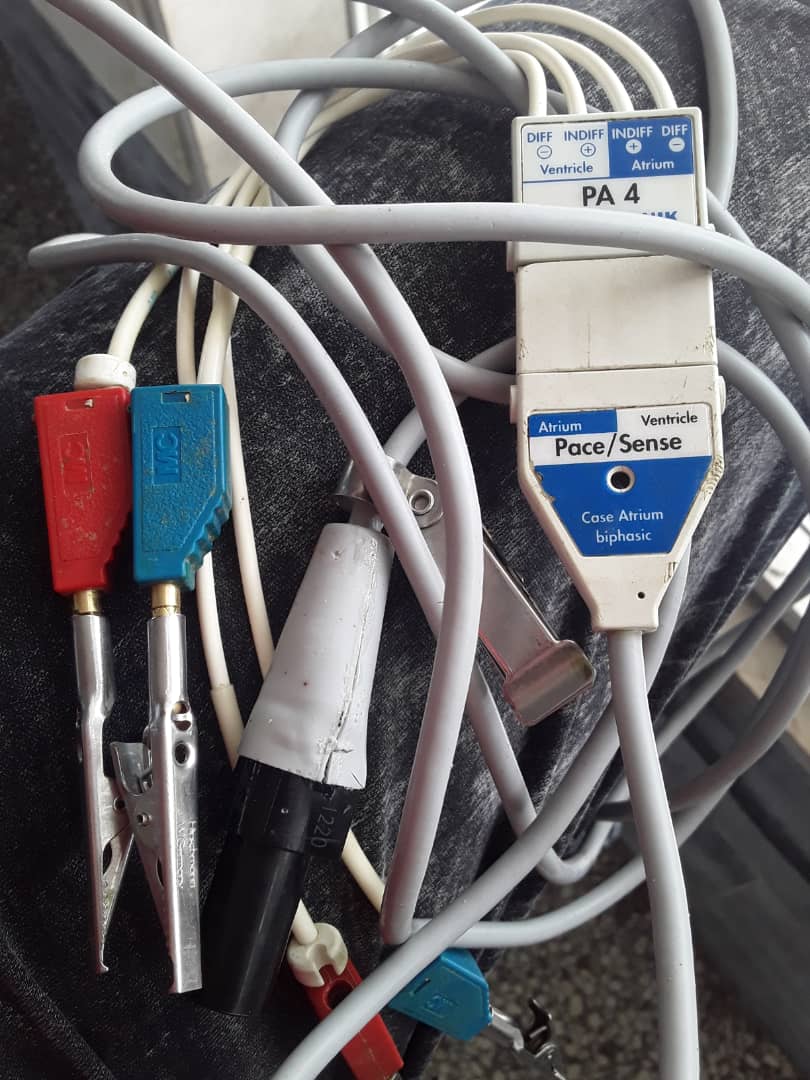Electronic Intervention, Encourages Hearts and Hope
especiales

Soldering iron, fine-tipped pliers, tin, regulated variable source and digital multimeter, these and other tools were used by Dariel Piloto de La Paz, perhaps with the precision of a surgeon but on a different patient, to restore functionality to a highly relevant piece of equipment in the Cardiology service of the Comandante Faustino Pérez Hospital, Matanzas.
The worker from the Management Group Soluciones y Servicios Técnicos Integrales, of the provincial subsidiary belonging to Corporation Copextel S.A., carried out a study of the problems in the equipment for implantation and programming of pacemakers in the health institution, the goal to repair and reduce the investment in the purchase of new substitutes.
The field of electronics does not escape the economic crisis the country is plunged upon, and therefore we have to be more educated in the technical aspect of our specialty; in a self-taught way we take on the challenge of study and analysis, to motivate inventiveness and the development of new alternatives to innovate, stated Piloto de La Paz.
The commitment to sensitive sectors like Health constitutes an incentive for the subsidiary's technicians, since due to the economic, commercial, and financial blockade imposed by the United States on Cuba, the arrival of key important equipment in this sector to the country considerably increases. Therefore, the solutions we provide, have a high social benefit, he added.

Javier Vidal Casal, head of the Cardiology service at the aforementioned hospital institution, explained that a pacemaker programmer constitutes equipment that determines the minimum energy to be used to depolarize the cell and generate electrical activity. Without this device, it’s impossible to perform such an analysis.
The Medtronic CareLink 2090 program, of North American nationality, is a portable system powered by the electrical network, based on a microprocessor, with software to interrogate and program Medtronic implant devices, Piloto de la Paz said.
Because this equipment is manufactured by US companies, it’s difficult to purchase, so I set out to find a viable solution to the dysfunctional electrode bypass cable that connects the machine to the patient, he argued.
The materials used for the repair were extracted from other discontinued equipment, free of charge, and with will, study, creativity and innovation the repair was achieved, which is feasible for the times we live in, and emerges as a creative innovation in this field, he says.
After the hospital specialists verified the correct functioning of the equipment after a considerable time of use, they again requested my help to try to find a solution for a portable program, which they would use as an auxiliary in an operation in case the main program failed.
This device was designed to be used only with batteries and as a result of time they were deteriorated and batteries were useless, it also presented problems on the display, due to poor voltage regulation in said part and piece.
The idea was to be able to replace the battery block with a regulated source in-voltage and electrical current to simulate the role of said battery in this equipment, but with the peculiarity of working with it connected to the current, because the voltage it needed is not present in a common batteries.
I used a cell phone charger source, thanks to this repair the useful life of the device was restored, since its start-up can help in the middle of a surgical procedure if the main program failed, he highlighted.
Dariel knows that achievement of his work exceeds the economic impact by restoring functionality to equipment worth thousands of dollars in the international market. The greatest relevance lies in the social benefit generated by an experience with possible replication in other hospitals, in other territories, in favor of a field as sensitive as Health, and an organ as indispensable as the heart.
Translated by Amilkal Labañino / CubaSí Translation Staff














Add new comment